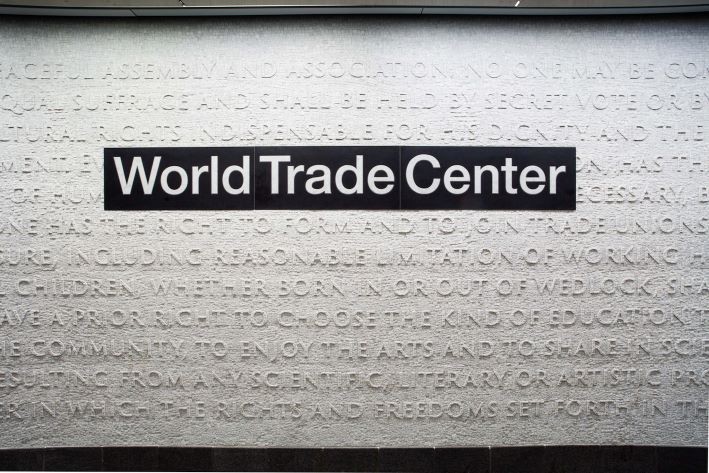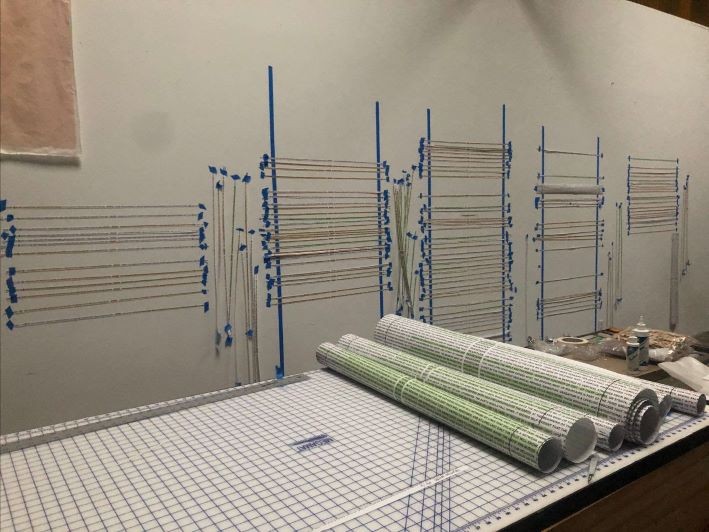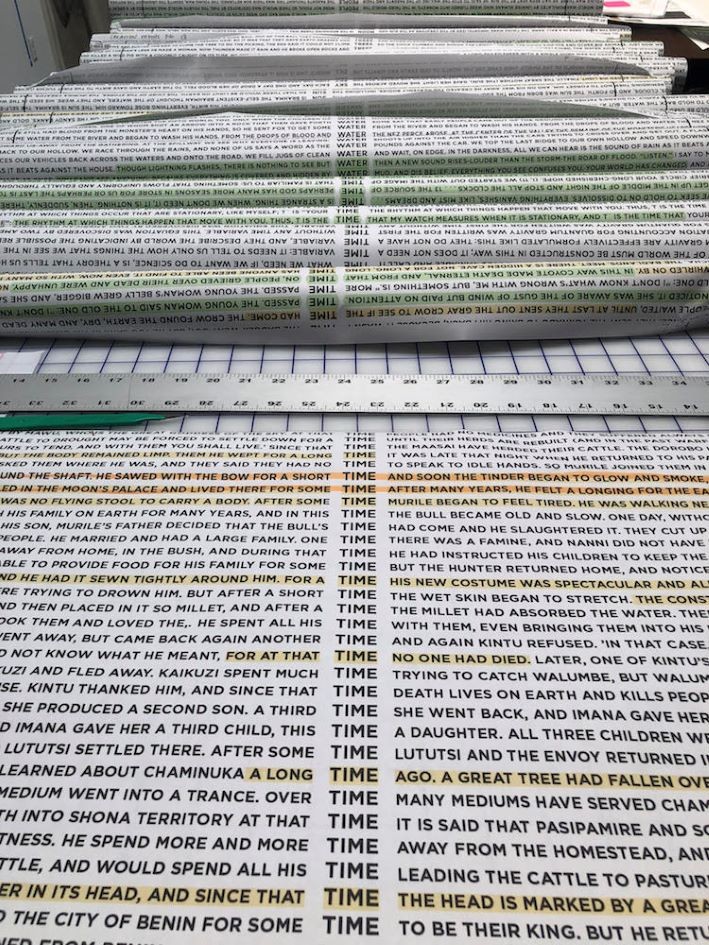Ann Hamilton: What are you working on now?
During her Spring 2019 visit to the School of the Arts, internationally acclaimed visual artist Ann Hamilton presented CHORUS, her stirring new work for New York City straphangers. Installed in the Cortlandt Street Station — destroyed on 9/11 and reopened in 2018 — the large-scale public work weaves text from the Declaration of Independence and the Universal Declaration of Human Rights in marble on the walls of the repaired transit space. We asked Hamilton what she is working on and thinking about now.
During her Spring 2019 visit to the School of the Arts, internationally acclaimed visual artist Ann Hamilton presented CHORUS, her stirring new work for New York City straphangers. Installed in the Cortlandt Street Station — destroyed on 9/11 and reopened in 2018 — the large-scale public work weaves text from the Declaration of Independence and the Universal Declaration of Human Rights in marble on the walls of the repaired transit space. We asked Hamilton what she is working on and thinking about now.

The School of the Arts: What are you working on now?
Ann Hamilton:
The daily news of the spreading virus, invisible to the eye but manifesting with heartbreak in bodies across the globe, the conditions of social distancing, the recent storms with nights of thunder and lightning, even the lone long call of the cardinal signaling for a mate, collectively work to make a different lens on everything — no less so on work in the studio. The view out my window is the same but what I see is different.
This shift in perception is especially true of the public art project I have been focused on over the last several months — a stone pavement for a public corridor linking the Mayo Clinic to downtown Rochester Minnesota.* A cousin to the MTA project at the World Trade Center [CHORUS], the text-based work of relief letters weaves multiple sources according to a central spine of keywords.
After more than a year of research and much circling, I settled on working with creation myths. From a pre-scientific age, creation myths explain how the world was formed, the beginning of consciousness, where people came from. They describe relations between water and earth, people and animals, the essential struggle between order and chaos, form and formlessness — relations and forces not-so foreign to the studio, though obviously at a different scale. Creation myths tell of times when there was harmony and times when the Gods, displeased with humans and their care of the earth, sent floods and pestilence. My time has been spent reading — following similarities across stories of diverse origin and in then finding contemporary resonances in these ancient accountings. Every religion and culture has its origin stories just as every story has its first sentence.
*My project is a commission of Destination Medical Center and is part of the larger public project: Heart of the City — a collaboration with landscape architects Coen+Partners, Minneapolis, and el dorado inc, Kansas City.
From David Leeming’s book Creation Myths of the World: An Encyclopedia
The Maori creation myth is a metaphor for all types of creation, whether human or cosmic. It is for this reason that the ritual words by which Io made the world are still used today to help in the conception of a child, in the composition of a poem, or in the renewal of a broken mind or spirit. The following is an example of a Maori ritual creation chant:
From the conception the increase,
From the increase the thought,
From the thought the remembrance,
From the remembrance the
Consciousness,
From the consciousness the desire.
The world became fruitful;
It dwelt with the feeble glimmering;
It brought forth night:
The great night, the long night,
The lowest night, the loftiest night.
The thick night, to be felt,
The night to be touched,
The night not to be seen,
The night of death.
From the nothing the begetting,
From the nothing the increase,
From the nothing the abundance,
The power of increasing
The living breath:
It dwelt with the empty space,
And produced the atmosphere which
is above us,
The atmosphere which floats above
the earth;
The great firmament above us dwelt
with the early dawn,
And the moon sprung forth;
The atmosphere above us dwelt with
the heat,
And thence proceeded the sun;
They were thrown up above,
As the chief eyes of Heaven:
Then the Heavens became light,
The early dawn, the early day,
The mid-day.
The blaze of day from the sky
O N E E V E R Y O N E • Ohio is a recent book of portraits we made for The Ohio State University sesquicentennial celebration. The book arrived from the printer the day the university closed, and it is in quarantine until the library at the university reopens and we can once again share it hand to hand. Until then, the video became a way of sharing — a virtual passing from hand to hand.




Below find images from Ann Hamilton's 2019 lecture at the Lenfest Center for the Arts. Watch the full presentation online below.
Images by Joel Jares
Images by Joel Jares
Images by Joel Jares
Images by Joel Jares
Images by Joel Jares
Images by Joel Jares
Images by Joel Jares
Images by Joel Jares
Images by Joel Jares